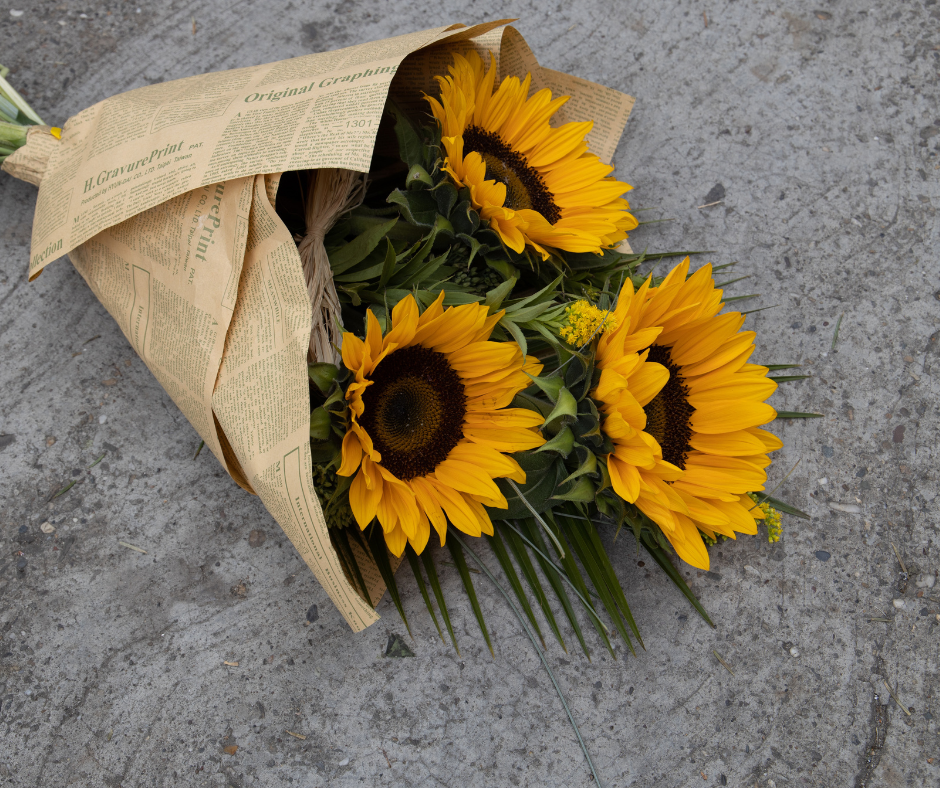With its bright yellow petals and sunny disposition, the sunflower is easily one of the most recognisable and beloved flowers in the world. Perfect for any occasion, these towering blooms have been around for millennia, revered for their beauty, usefulness, and symbolism.

A History of Sunflowers
Native to North America, sunflowers (or Helianthus annuus) were first used by Indigenous peoples more than 4,000 years ago. The early Native American tribes would use the flowers for all sorts of practical purposes, whether that be for food, medicine, or even producing dye. The seeds specifically would be ground into flour, pressed for their oil, and eaten as a tasty snack.
Sunflowers first gained popularity in Europe when explorers from the Americas brought them back. It was only in the 18th century that sunflowers made their way to Russia, where they went on to become a major agricultural crop for their rich sunflower oil.
Today, both sunflower seeds and oil are consumed across the world, highly valued for their health benefits, such as lowering the risk of chronic diseases and supporting a healthy immune system. The flowers themselves continue to be a popular decoration for homes, in floral arrangements, and in public gardens.

The Cultural Significance of Sunflowers
For the Indigenous American peoples, sunflowers were seen as a symbol of harvest and provision as the seeds were highly nutritious for their crops, used as a type of fertiliser. As such, these tribes would often plant sunflowers along the boundaries of their fields to mark the edges. In Europe and Russia, however, sunflowers quickly became a symbol of devotion and loyalty, which came from the way they turn their heads towards the sun. In Russia particularly, sunflower oil became a staple in Russian cuisine, and remains that way even today.
Perhaps most noticeably, sunflowers were immortalised in art by Vincent Van Gogh, with his iconic Sunflowers paintings. Writers and poets have long been inspired as well, using sunflowers as metaphors for hope, beauty, and new life. Poets such as William Blake and Mary Oliver even used the image of a sunflower to comment on the cycle of life and the beauty in growth.

The Symbolism of Sunflowers
As you have probably already assumed, sunflowers hold a variety of different meanings, depending on the context. In the Victorian Era’s ‘Language of Flowers’, sunflowers represented longevity, adoration, and loyalty – a direct embodiment of the sun. They can also symbolise:
1. Happiness
It’s impossible to look at a sunflower and not feel more positive and happy. Their radiant yellow petals give them a striking similarity to the sun, which is why they’re often associated with joy, warmth, and optimism.
2. Strength
As the Native Americans found, sunflowers are hardy and resilient, able to grow in even the toughest of conditions. This trait means they’re often associated with resilience, strength, and the ability to persevere. If you’re gifting a bouquet to a friend going through a hard time, sunflowers are the perfect bloom to include.
3. Loyalty
The way sunflowers tend to turn towards the sun gained them an association with loyalty and devotion. While this is due to the sunflower’s heliotropic nature, they’ve become a popular choice for romantic bouquets, or to symbolise fidelity.
4. Abundance
Sunflower seeds are rich with oil and nourishment, which makes them great for fertilising gardens and crops, but it’s this trait that lent them the meaning of abundance and prosperity. Sunflowers are seen as a symbol of sustenance and wealth, so if you’re giving flowers to someone who is starting a new job, a family, or embarking on a new pursuit, don’t forget to include a few of these blooms.

So, on top of being beautiful to look at, sunflowers really are a testament to the resilience of nature, a symbol of loyalty and happiness, and continue to inspire generations of artists and gardeners. To invite positive energy, happiness, and abundance into your home, consider adding a vase of sunflowers somewhere you can see them. And don’t forget the lesson of the sunflower: always look towards the light.

